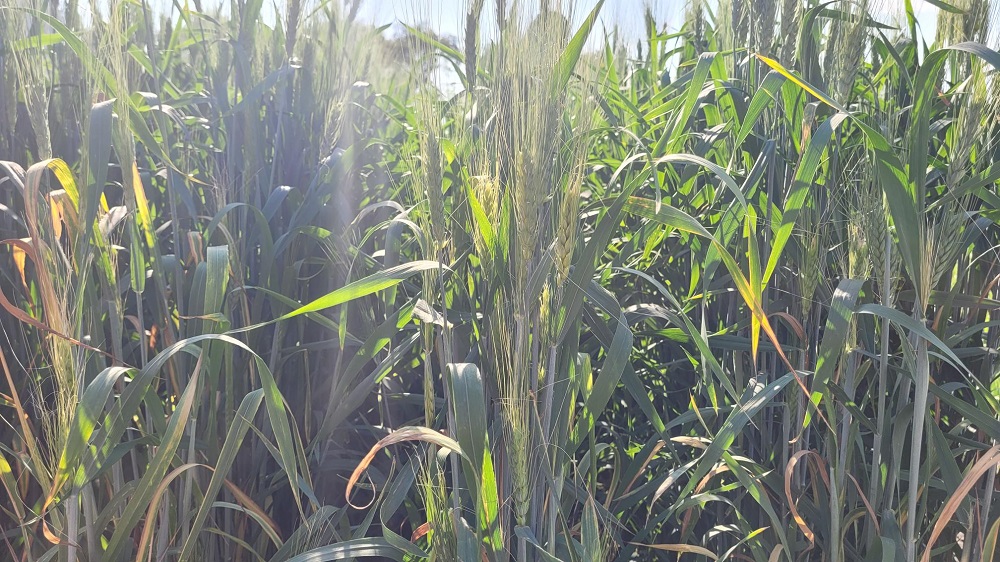Precipitation ranged from trace amounts up to 3 millimetres. Producers are reporting that they would like to see this trend continue at least another week to help wrap up seeding. Once seeding is finished, they would appreciate more rain to help crops emerge and establish quickly.
The topsoil moisture levels across the region continue to hold at levels sufficient to ensure proper germination and crop growth. Cropland topsoil moisture is rated as 8 per cent surplus, 88 per cent adequate and 4 per cent short. Hay and pasture land topsoil moisture is rated as 90 per cent adequate and 10 per cent short. Many producers are reporting they have the perfect level of soil moisture for seeding and they are very optimistic about their crop this year.
Pasture conditions have improved in the region due to plenty of available moisture and some recent warm weather. Pastures are rated as 15 per cent excellent, 76 per cent good, 7 per cent fair, 1 per cent poor and 1 per cent very poor. Cattle producers are confident their pastures will hold their livestock all season as long as they receive semi-regular rains over the summer months.
Crop development is slightly delayed in the region due to the excessive moisture conditions and some cool weather in the beginning of May. Now that fields are drying up and the weather is forecasted to be warmer, the crop is expected to develop rather quickly. Although there was a light frost in the region this past week, early reports indicate there was no major damage to crops that have emerged. Producers will be working very hard over the next two weeks to complete their seeding operations and control rapidly growing weeds in their fields.
Very little rain fell in the region this past week. The most notable precipitation was received in the Hazenmore area with 10 mm. More rain will certainly be needed now that seeding is close to completion. Areas in the north half of the region appear to be worse off than the southern half and some producers claim their crop might not have enough moisture to emerge evenly.
Topsoil moisture levels continue to dwindle. Cropland topsoil moisture is rated as 61 per cent adequate, 32 per cent short and 7 per cent very short. Hay and pasture land topsoil moisture is rated as 56 per cent adequate, 34 per cent short and 10 per cent very short. The driest area of the region is Crop District 4B where 73 per cent of both cropland and hay and pasture is reported to be short of moisture.
Pasture conditions are rated as 8 per cent excellent, 38 per cent good, 35 per cent fair, 15 per cent poor and 4 per cent very poor. It is reported that many community pastures in the region have improved from previous years and will be able to sustain cattle longer due to proper regrowth in the spring. Producers will be keeping a close eye on the grass and water levels of their pastures if it does not rain regularly in June and July.
Overall, crop development is rated as normal for this time of year despite an abnormally cool spring; however, without more rain, crops will soon begin to stunt their growth. Most of the crop damage this week was mainly caused by frost which early reports indicate was very minor. Gopher populations are reported to be very high and the first signs of grasshoppers in ditches have been reported. Producers will begin to control them where necessary.
Very few parts of the region received rainfall over the past week and some producers in the drier part of the region are concerned about the lack of moisture. The Kenaston area received 15 mm of rain, the Allan area 13 mm and the Craik area 11 mm. This moisture will help emerging crops and pasture grasses for a brief time.
Hot, windy weather has quickly dried out soil across the region. Cropland topsoil moisture is now rated as 65 per cent adequate, 30 per cent short and 5 per cent very short. Hay and pasture land topsoil moisture is rated as 56 per cent adequate, 35 per cent short and 9 per cent very short. Pasture conditions are rated as 3 per cent excellent, 38 per cent good, 38 per cent fair, 16 per cent poor and 5 per cent very poor. The majority of cattle are now on pasture with the remaining herds expected to be moved in the next week.
Overall, most of the crops are at the normal stages of development for this time of year due to the cool wet conditions in April and early May, which delayed seeding for several weeks.
Most of the crop damage this week was from frost and flea beetles, which have been reported to be a large issue in some parts of the region. Some garden crops have been decimated by the pest since very little canola has emerged. Producers will be very vigilant of their canola and will spray the flea beetles if their population reaches economic thresholds.
There were scattered rain showers in the region over the past week, but very few areas received sufficient moisture to alleviate the pressure of the dry conditions. The Rosetown area reported the highest amount of rain in the region with 21 mm, the Wilkie area 13 mm and the Cando area 10 mm. Some producers are in desperate need of moisture and may hold off seeding any more canola until a rain shower occurs.
Topsoil moisture for the region continues to fall with the constant wind and warm weather drying out soil. Cropland topsoil moisture rated as 41 per cent adequate, 49 per cent short and 10 per cent very short. Hay and pasture land topsoil moisture is rated as 26 per cent adequate, 52 per cent short and 22 per cent very short.
Dry soil conditions have slowed pasture and hay land growth. Producers have indicated that significant rains will be needed to improve pastures to a point where cattle can graze them all summer. Pasture conditions are rated as 20 per cent good, 35 per cent fair, 27 per cent poor and 18 per cent very poor.
Due to the overly dry conditions, crops are rated as normal to behind in their developmental stage for this time of year. Fall and spring cereals are rated the highest for normal development while crops like canola are suffering from the dry growing conditions. Most of the crop damage this week is due to strong wings, light frost and limited moisture. Producers are busy applying pest control products when the weather allows.
There was not much rain across the region over the past week with the highest recorded being eight mm in the Prince Albert area. As a result of the rainless, windy week, topsoil conditions in the region declined. Cropland topsoil condition is rated as 71 per cent adequate, 26 per cent short and 3 per cent very short. Hay and pasture land is rated as 61 per cent adequate, 35 per cent short and 3 per cent very short.
Pastures in the region are rated to be three per cent excellent, 48 per cent good, 40 per cent fair, 8 per cent poor and only 1 per cent very poor. Livestock producers are happy to see their pastures bounce back and will be moving any remaining animals to pastures soon. As always, producers would like to see semi-regular summer showers on their pastures to ensure grass regrowth as cattle graze it.
Most of the crops are normal in their developmental stage for this time of year due to adequate moisture early in the spring and warm daytime temperatures. There were reports of frost and producers will be out assessing damage over the next couple days.
Parts of the northwest finally received precipitation this past week. In areas of higher rainfall, producers are hopeful it will help the crop emerge and establish. The Livelong areas received the most moisture with 21 mm, the Barthel and Mayfair areas 18 mm and the Hafford area 10 mm. More rain is needed as the region is experiencing drier than normal conditions for this time of year.
Cropland topsoil moisture is rated as 49 per cent adequate, 39 per cent short and 12 per cent very short. Hay and pastureland topsoil moisture is rated as 44 per cent adequate, 33 per cent short and 23 per cent very short.
Pastures in the region are struggling through the dry conditions and grass growth has been slow. Pasture conditions are rated as 26 per cent good, 27 per cent fair, 32 per cent poor and 15 per cent very poor. A good soaking rain is needed to help pastures rapidly regrow and offset the pressure of grazing animals.
Overall, crop development is ahead or normal for this time of year, largely due to the early seeding start and dry conditions. There were no reports of crop damage to note in the region over the week, but producers will be on the lookout for any potential risks to their crops.








